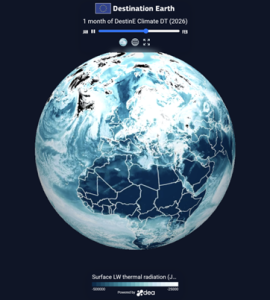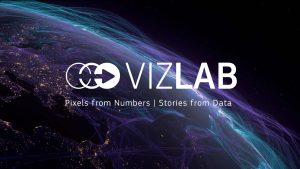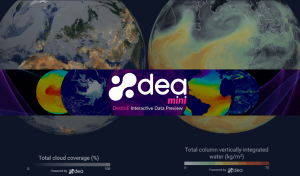What’s new in this release?
A new layer “Surface net long-wave thermal radiation” will be added to the available Imagery options when using the miniDEA service.
The new layer will replace the current “Precipitation Rate” layer, also on the DestinE Platform web portal homepage.

What is the Surface net long-wave thermal radiation?
Thermal radiation (also known as longwave or terrestrial radiation) refers to radiation emitted by the atmosphere, clouds and the surface of the Earth. This parameter is the difference between downward and upward thermal radiation at the surface of the Earth. It the amount passing through a horizontal plane.
The atmosphere and clouds emit thermal radiation in all directions, some of which reaches the surface as downward thermal radiation. The upward thermal radiation at the surface consists of thermal radiation emitted by the surface plus the fraction of downwards thermal radiation reflected upward by the surface.
This parameter is accumulated over a particular time period, which depends on the data extracted. The units are joules per square metre (J m-2). To convert to watts per square metre (W m-2), the accumulated values should be divided by the accumulation period expressed in seconds.
* The above information is taken from the article Radiation Quantities in the ECMWF model and MARS available in the ECMWF DestinE Climate DT documentation.
Deployment details
The deployment of the miniDEA new releases is scheduled for Tuesday 13 May 2025 from 10:00 to 11:00 CEST. During this window, the service will be temporarily unavailable.
Visit the miniDEA service here!










